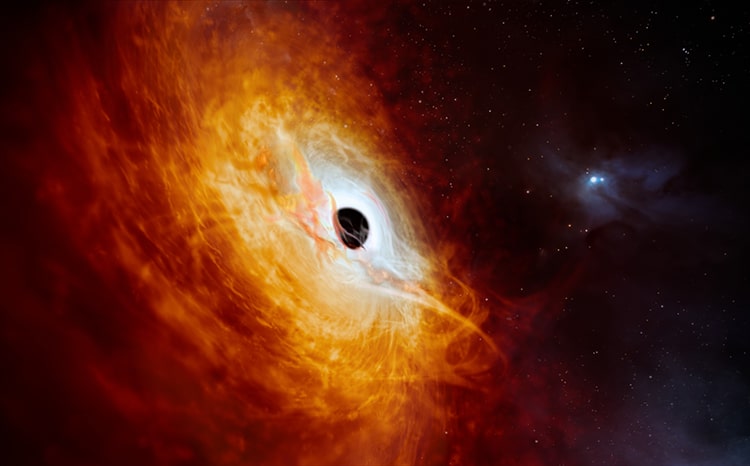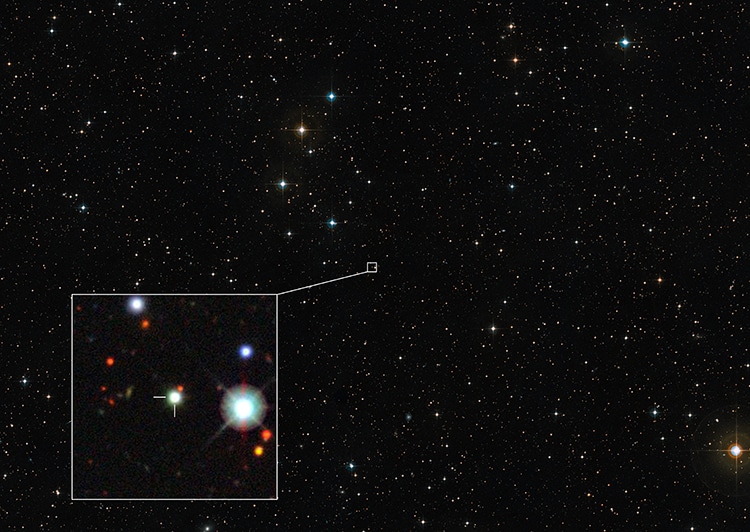
An artist’s impression of the quasar J059-4351. (Photo: ESO/M. Kornmesser)
Stars dominate our nighttime visual universes, dazzling us with beauty and sparkle as they rise in the evening and shift with the seasons. Chief among the stars is our Sun, so bright you cannot look directly at it without vision damage. However, stars—and even our Sun—are not the brightest things in the universe. Quasars hold that highest honor. These are celestial phenomenon within the active galactic nuclei category: at the center is a black hole sucking in matter from the surrounding space, including stars themselves. The matter swirls into an accretion disk, where the gas and stars and matter all collide to produce heat, visible to us as light. Excitingly, researchers have discovered the brightest quasar yet known—500 trillion times brighter than our own Sun.
This speck of light in a vast universe was photographed by telescopes in the 1980s but categorized initially as a star. Modern technology has vastly accelerated the process of discovering quasars, as artificial intelligence can be trained to scan for signatures of these phenomena. Last year, researchers using the Siding Spring Observatory and the Very Large Telescope in Chile realized the “star” was in fact a quasar, now known as J0529-4351. According to a statement from the European Southern Observatory, the quasar is 12 billion light-years away, meaning the light we see is from the distant past. “We have discovered the fastest-growing black hole known to date,” Christian Wolf, lead author paper in Nature Astronomy, said in a statement. “It has a mass of 17 billion Suns, and eats just over a Sun per day. This makes it the most luminous object in the known Universe.”
The black hole is no longer expanding at the rate it once did. “It is a surprise that it has remained unknown until today, when we already know about a million less impressive quasars. It has literally been staring us in the face until now,” stated co-author Christopher Onken. However, the “past” of the quasar can tell us a lot. Because of its massive size, it is the perfect fit for new techniques intending to measure the mass of black holes. As counter-intuitive as it may seem, a quasar with a light-sucking black hole at its center is the brightest thing in the universe, and the next big thing in astronomy.
Scientists have discovered the brightest quasar yet known, 500 trillion times as bright as our own Sun.

ESO’s Very Large Telescope (VLT) captures the quasar. (Photo: ESO/Digitized Sky Survey 2/Dark Energy Survey)
h/t: [Smithsonian Magazine]
Related Articles:
Photographer Captures Rare “Green Flash” Coming From Venus
NASA Lets You Download Thousands of High-Resolution Space Images for Free
Astronaut Takes Photo of Pyramids During His Last Day on ISS
Explore the Surface of Mars in 4K Resolution With Footage Captured by NASA’s Rovers
